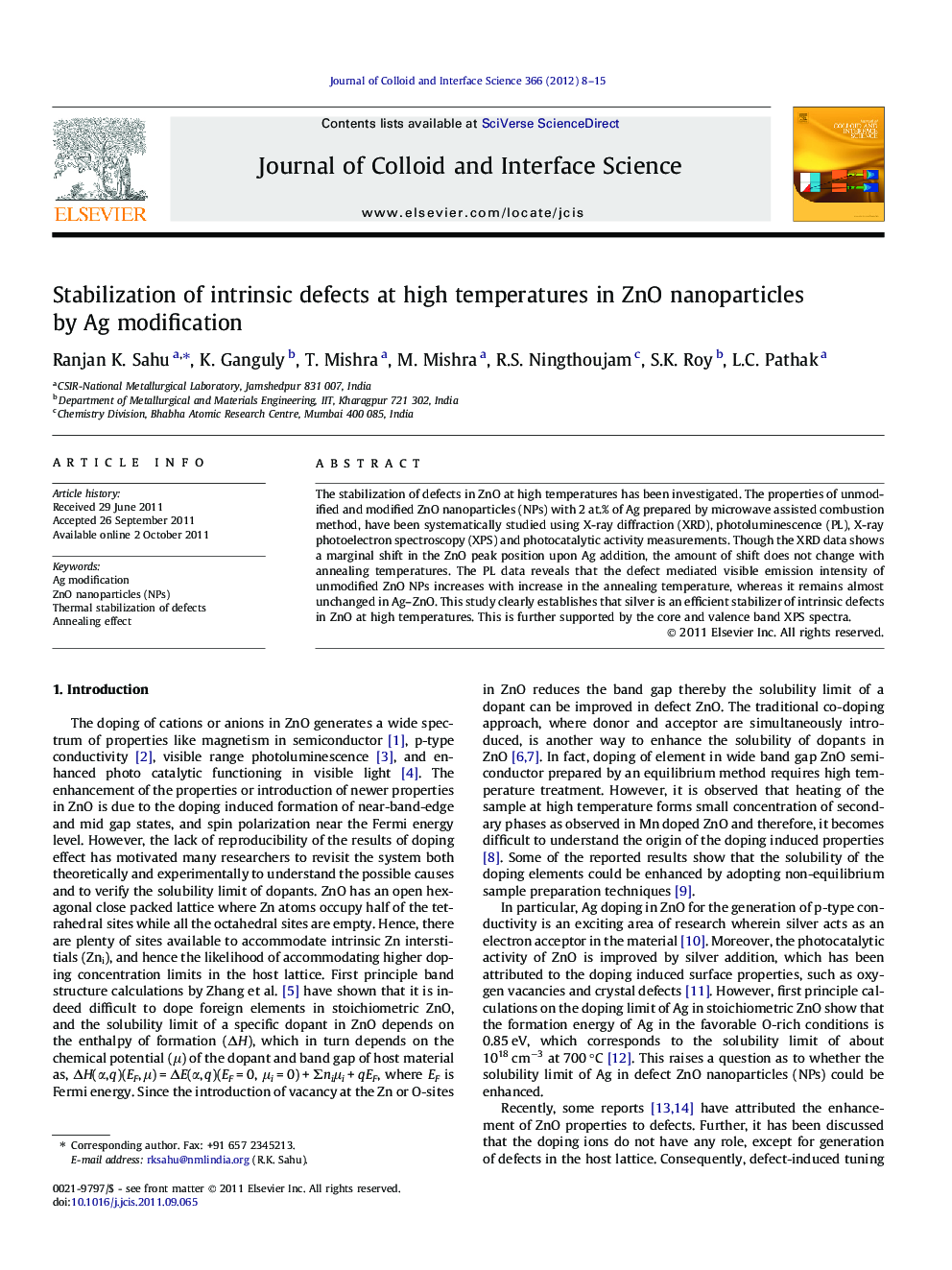| Article ID | Journal | Published Year | Pages | File Type |
|---|---|---|---|---|
| 608373 | Journal of Colloid and Interface Science | 2012 | 8 Pages |
The stabilization of defects in ZnO at high temperatures has been investigated. The properties of unmodified and modified ZnO nanoparticles (NPs) with 2 at.% of Ag prepared by microwave assisted combustion method, have been systematically studied using X-ray diffraction (XRD), photoluminescence (PL), X-ray photoelectron spectroscopy (XPS) and photocatalytic activity measurements. Though the XRD data shows a marginal shift in the ZnO peak position upon Ag addition, the amount of shift does not change with annealing temperatures. The PL data reveals that the defect mediated visible emission intensity of unmodified ZnO NPs increases with increase in the annealing temperature, whereas it remains almost unchanged in Ag–ZnO. This study clearly establishes that silver is an efficient stabilizer of intrinsic defects in ZnO at high temperatures. This is further supported by the core and valence band XPS spectra.
Graphical abstractFigure optionsDownload full-size imageDownload high-quality image (83 K)Download as PowerPoint slideHighlights► An easy route to introduce plenty of defects in ZnO. ► Evidences for silver is an efficient stabilizer of intrinsic defects in ZnO at high temperatures. ► Defect controlled electronic properties of unmodified and Ag modified ZnO.
